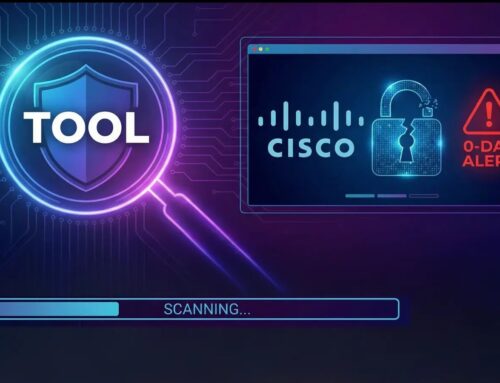
Hackers Weaponizing Free Trials of EDR to Disable Existing EDR Protections
The Silent Saboteur: When EDR Becomes a Weapon Against Itself
The digital defense landscape is in a constant state of flux, with security solutions evolving to counter increasingly sophisticated threats. However, a concerning new tactic has emerged from the shadows: attackers are now weaponizing the very tools designed to protect us. Specifically, threat actors are exploiting free trials of Endpoint Detection and Response (EDR) software to disable existing security protections on compromised systems. This ingenious, yet alarming, method, dubbed BYOEDR (Bring Your Own EDR), signifies a significant evolution in defense evasion, turning legitimate security tools into instruments of compromise.
BYOEDR: A Trojan Horse in Digital Armor
The concept behind BYOEDR is deceptively simple: once an attacker gains initial access to a target network, they don’t bother trying to disable the existing EDR solution through traditional, often detectable, means. Instead, they leverage readily available free trials of other EDR products. By installing a new EDR solution, even one in a trial phase, conflicts arise with the currently running security software. This conflict can lead to the legitimate, installed EDR being disabled, quarantined, or rendered ineffective, paving the way for the attackers to operate unfettered.
This method circumvents many traditional EDR tampering detections because the actions performed are, from the perspective of the *new* EDR, legitimate installation and configuration steps. The conflict arises from the fundamental design of EDR solutions, which are often built to be the sole endpoint security agent, and their aggressive stance on detecting and neutralizing other potentially conflicting security software.
Understanding the Attack Flow
While specific attack chains can vary, the general progression of a BYOEDR attack typically involves several stages:
- Initial Compromise: Attackers gain a foothold in the target environment using common tactics such as phishing, exploiting known vulnerabilities (e.g., CVE-2023-XXXXX, CVE-2022-YYYYY – *Note: Specific CVEs for BYOEDR exploits are unlikely as it leverages legitimate software behavior, not a specific vulnerability in the EDR itself. It’s a technique, not a flaw.*), or misconfigurations.
- Reconnaissance and Persistence: Once inside, they may conduct reconnaissance to identify the existing EDR solution and establish persistence.
- BYOEDR Deployment: The core of the attack. Threat actors download and install a free trial of an EDR solution from a well-known vendor. This often requires administrative privileges, which they would have already obtained during the initial compromise.
- Defense Evasion: The newly installed EDR conflicts with the pre-existing EDR. This conflict can manifest as:
- One EDR detecting and quarantining the other as a “rogue” security agent.
- System performance issues leading to one EDR’s services being stopped.
- Registry conflicts or driver clashes that disable core functionalities.
- Malicious Activities: With the primary EDR effectively neutered, attackers are free to deploy malware, steal data, establish further backdoors, or move laterally across the network with significantly reduced risk of detection.
Why BYOEDR is a Game Changer
The BYOEDR technique highlights several critical shifts in the threat landscape:
- Leveraging Legitimate Tools: This isn’t about exploiting a software flaw but about weaponizing normal operational behavior. It makes detection incredibly challenging as the actions themselves resemble legitimate software deployment.
- Vendor Blind Spots: EDR vendors typically focus on detecting malicious binaries or behaviors. They are less equipped to handle situations where a legitimate, signed application from another reputable security vendor is the “threat.”
- Supply Chain Implications: While not a direct supply chain attack, it highlights how widely available, legitimate software can be repurposed for malicious ends, adding another layer of complexity to risk management.
- Sophistication and Stealth: This technique requires a deep understanding of EDR mechanics and system internals, indicating a higher level of sophistication from the attackers.
Remediation Actions and Protective Measures
Defending against BYOEDR attacks requires a multi-layered approach, focusing on prevention, detection, and hardening endpoint configurations.
- Strict Application Whitelisting: Implement robust application whitelisting or allow-listing policies that only permit approved software to execute on endpoints. This is arguably the most effective preventative measure against BYOEDR. Ensure policies prevent the installation of unauthorized EDR solutions.
- Principle of Least Privilege: Enforce the principle of least privilege rigorously. Prevent users and even many service accounts from having administrative rights that would allow them to install additional software, especially EDR solutions.
- Enhanced Endpoint Monitoring: Closely monitor for the installation of new software, especially security-related applications. Look for unexpected process creations, driver installations, or changes to security-related registry keys.
- Network Segmentation: Isolate critical assets and segment your network. This limits the lateral movement of attackers even if they manage to disable an EDR on one endpoint.
- Behavioral Analytics: Invest in security solutions that utilize advanced behavioral analytics to detect anomalous activities, such as an unusual increase in resource consumption, unexpected network connections, or modifications to core system files by non-standard processes.
- Regular Security Audits: Conduct regular audits of your endpoint security configurations and active EDR agents to ensure they are functioning as expected and haven’t been tampered with.
- Review EDR Configuration: Analyze your existing EDR’s configuration to see if there are settings that could detect or prevent the installation of competing security software. Some EDRs have features to prevent tampering or the installation of unapproved agents.
Tools for Detection and Mitigation
| Tool Name | Purpose | Link |
|---|---|---|
| Osquery | Endpoint visibility, system auditing, and threat detection by exposing an operating system as a high-performance relational database. Can query for new software installations. | https://osquery.io/ |
| Sysmon | Windows system service that logs system activity to the Windows event log, providing detailed information about process creation, network connections, and file access. Crucial for detecting unauthorized installations. | https://learn.microsoft.com/en-us/sysinternals/downloads/sysmon |
| Microsoft Defender for Endpoint (MDE) | Advanced EDR solution with strong behavioral detection capabilities that can potentially flag the installation of competing security software as suspicious. | https://www.microsoft.com/en-us/security/business/threat-protection/microsoft-defender-for-endpoint |
| Centralized Log Management (e.g., Splunk, ELK Stack) | Aggregates logs from various security tools and endpoints, enabling analysis and correlation of events to detect anomalous software installations or EDR conflicts. | https://www.splunk.com/, https://www.elastic.co/elastic-stack |
Conclusion: Adapting to the Evolving Threat
The BYOEDR technique underscores a critical principle in cybersecurity: the constant need for adaptation. Attackers are no longer just looking for vulnerabilities in code; they are exploiting the inherent logic and design of security solutions themselves. For security professionals, this means moving beyond signature-based detection and focusing more on behavioral analysis, stringent access controls, and comprehensive endpoint visibility. Staying ahead requires understanding the tools, tactics, and procedures (TTPs) of adversaries, even when those TTPs involve turning our own defenses against us. The fight for cybersecurity continues, and vigilance remains our strongest weapon.





